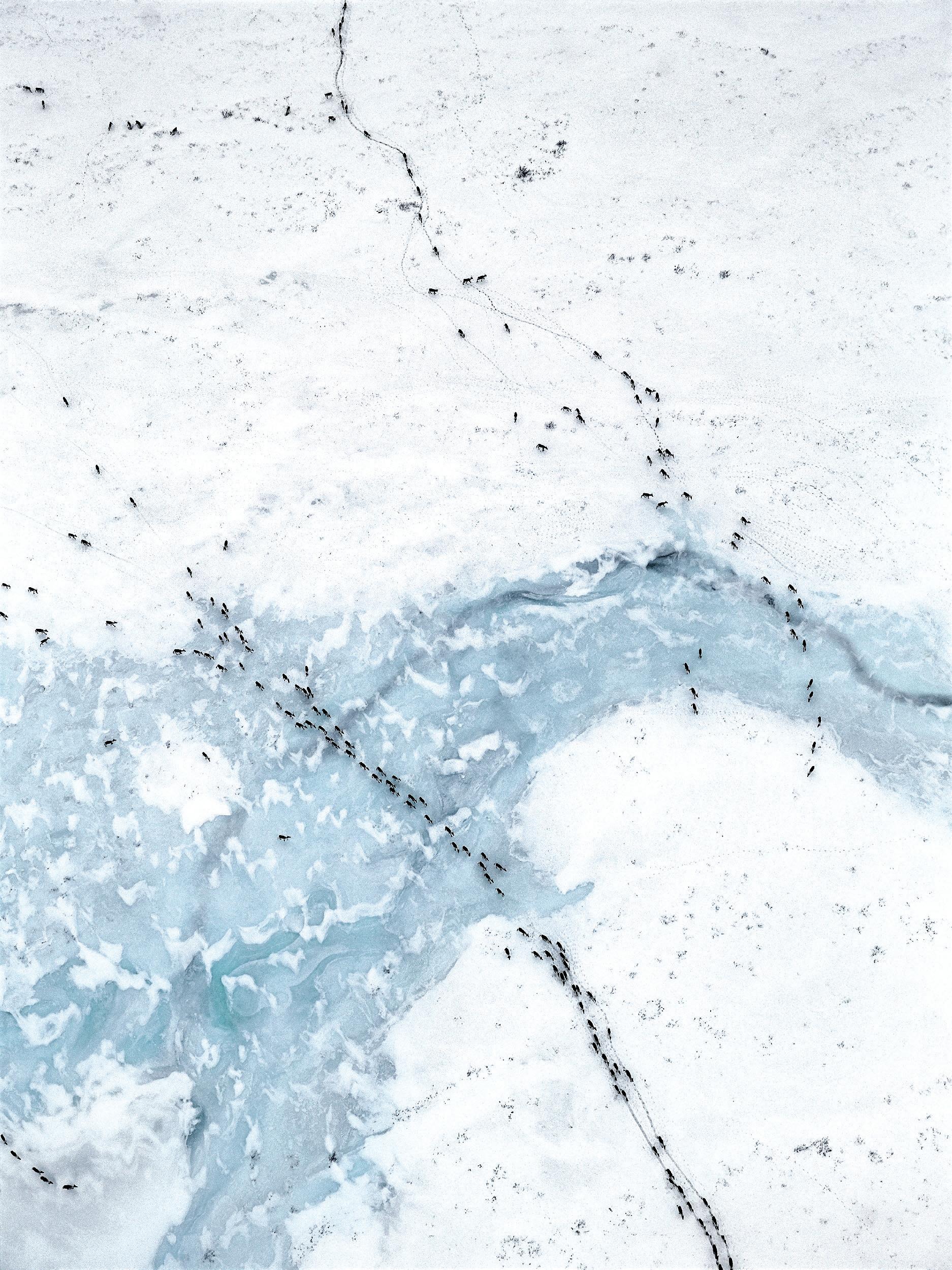
3 minute read
Of home and food
from 2012-07 Sydney (2)
by Indian Link
educator, Subhankar Banerjee.

BY RITAM MITRA
The 18th Biennale of Sydney takes place between June 27 to September 16 this year, the length and quality of the exhibition making it Australia’s largest and most exciting contemporary arts event. Artist talks, performances, forums, film screenings, family events and guided tours make up the programme of this free exhibition. Naturally, artists featured in the festival will have come from a variety of backgrounds and led colourful lives – but few will have come through a journey quite as unique as artist, activist and
Subhankar’s work focuses on eco-cultural issues such as resource wars, climate change and Indigenous rights. He has delivered over 100 lectures, taken iconic photographs, and a book of his featuring Arctic photography, initially part of a display in the Smithsonian Institute, has been the topic of contentious debate in the US Senate. However, Subhankar’s philosophy is a simple one.
“Things that I do may come across as variety, but for me it is simply talking about two issues – home and food that the land provides to humans, and other species with whom we share this earth,” he says. “Everything before us – look around at the rate and speed of environmental destruction – that is challenging to me and everyone else who is working on these issues”.
It was a big surprise then, when Subhankar, already recipient of countless awards and honours including being named an Arctic Hero by Alaska Wilderness League, reveals that he was born in the small West Bengal town of Berhampore, and studied electrical engineering in India before receiving two Masters degrees in Physics and Computer Science in the United States.
Subhankar grew up revelling in the work of Satyajit Ray and Mrinal Sen, and was introduced to the work of Mahasweta Devi, a renowned activist and writer, by his parents at a young age. He was taught how to paint by his great uncle Bimal Mookerjee, and although he had a passion for arts, as a member of a middle-income family, he chose the more practical path of science.
Subhankar’s transition from being offered exciting research positions in advanced mathematics to developing a full-fledged career in socio-cultural activism was a long one. Indeed, his initial love for physics was a result of a passion for thinking, and a sense that, in this field, he was closer to poetry and philosophy. Subhankar fell in love with the wide, open spaces of the desert during trips across the American southwest. Armed with an SLR Minolta camera, and in the company of fellow members of the environmental organisation Sierra Club, Subhankar made the decision to leave his position at Boeing to become a full-time artist, educator and activist. His journey since 2000 has been inspirational, to say the least. After leaving Boeing, Subhankar spent 14 months in the Arctic National Wildlife Refuge, and published his first book – Arctic National Wildlife Refuge: Seasons of Life and Land. With the help of a grant from the Lannan Foundation, Subhankar’s book was distributed to indigenous communities, libraries, students and policy makers in the US, yet met with controversy when the George W. Bush administration censored the book’s accompanying exhibition in the Smithsonian National Museum of Natural History.
“When the Smithsonian political controversy about my Arctic photography happened in 2003 in Washington DC, I didn’t consider myself a political activist or my art as political art, even though I had given my photographs to conservation groups to raise awareness,” he reveals. “But that experience, more than anything else, prompted me to become an activist. I don’t do art for art’s sake; my work is about engaging with the world we inhabit, and politics is an integral part of that process.”
Subhankar’s photography is globally recognised, and having spent the last two years editing the anthology Arctic Voices – Resistance at the Tipping Point, which was published earlier this month, Subhankar’s writing is fundamental in his quest for change. “You can say that my photographs are quiet, in the sense that they might encourage an emotional response, whereas my writing is rather loud, that might encourage action,” he says.

“The environmental destruction that is taking place is massive, and the inaction on part of the US government prompted me to found ClimateStoryTellers.org, not only to share my own writing, but also by many others from around the world including, Alaska, Australia and India”.
In today’s global community where the world has become a smaller place, climate change has become an issue of increasing importance. Human rights, however, has been a fundamental keystone of activism throughout history. It is Subhankar’s unique willingness to link these two traditionally separate issues that makes his work relevant to everyone, everywhere in the world.
Often, we find ourselves pigeonholed into a corner of society, and this is not necessarily a bad thing. But we form just a tiny part of the larger machine that is this planet, and we need to lend ourselves to it to ensure that the rest of the machine is actually working properly.
Subhankar’s journey is a testament to the fact that whether you are an engineer, doctor, musician, or builder, the planet belongs to everyone, and there is really no excuse for not caring. Check out Subhankar Banerjee’s work at the Biennale of Sydney at the Art Gallery of NSW, until 16 Sept










